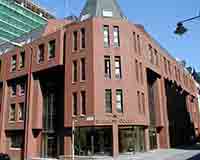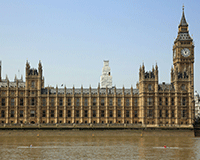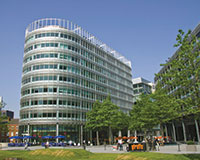 Mention the word “project” in Manchester and property ears are sure to prick up. Because in the toasty world of the city’s office market, that word is increasingly synonymous with “large requirement”.
Mention the word “project” in Manchester and property ears are sure to prick up. Because in the toasty world of the city’s office market, that word is increasingly synonymous with “large requirement”.
Project Green, for instance, is London law firm Freshfields Bruckhaus Deringer’s quest, now at the shortlist stage, for a 100,000 sq ft outpost in the city. And Project Jupiter is a mysterious (probably public sector), three-pronged enquiry, fronted by Bilfinger GVA, for up to 500,000 sq ft in Manchester or Liverpool.
While Liverpool could certainly do with a big occupier landing in town (see box), it is Manchester that is preparing for new arrivals. “The northern powerhouse is out there as a brand and people are buying into it,” explains CBRE’s North West managing director John Ogden, who foresees other Magic Circle legal firms taking space in the city, following in Freshfields’ footsteps.
Figures from JLL show that 10 major inward investors have chosen to be located in Manchester in the past three years. And the firm’s office agency director, Chris Mulcahy, expects the flow to continue. “The hotter London becomes, the hotter Manchester will get,” he says. “It isn’t just about rising occupation costs, there’s also an underlying issue about the cost of living, housing in particular, in the capital.”
And Manchester is not just on the radar of UK-based companies. Bilfinger GVA’s head of North West offices, Chris Cheap, reckons the city’s viability as a location for mainland European businesses is increasing. “I anticipate that there will be a considerable level of new large employer entrants to the Manchester market over the next two years,” he says.
Where that demand will go (excluding a mooted temporary relocation of parliament – see box) is an interesting question. Deloitte Real Estate’s North West head of real estate, Michelle Steele, observes that since DRE’s crane survey last autumn, the amount of offices under construction has almost tripled, to 1m sq ft. About 700,000 sq ft of this is available before buildings complete between next spring and late 2017.
 More space is on the way: Steele points to Ask Developments’ 6 First Street, where work on 170,000 sq ft could start this September. Similarly, Muse development director Phil Mayall says that two blocks totalling 450,000 sq ft could be built either side of ECF’s 125,000 sq ft One New Bailey, which is under construction.
More space is on the way: Steele points to Ask Developments’ 6 First Street, where work on 170,000 sq ft could start this September. Similarly, Muse development director Phil Mayall says that two blocks totalling 450,000 sq ft could be built either side of ECF’s 125,000 sq ft One New Bailey, which is under construction.
While it is the big takers making news, most businesses in Manchester occupy less than 5,000 sq ft, says Matthews & Goodman partner David Laws. “That tier is facing compression and I’d like to see developers focusing on providing space in 10,000-20,000 sq ft blocks,” he adds.
Those wishes may soon be answered. London and Hereford-based property company Boultbee Brooks, for example, recently bought the 38,000 sq ft St James’s Court in Brown Street, which it intends to comprehensively refurbish.
 The view from Liverpool
The view from Liverpool
Unlike the office scene 30 miles east, the market in Liverpool is still struggling.
However, rents have bounced back and incentives drawn in from a low point when a five-year lease on brand new space could be had for £20 per sq ft and two-and-a-half years rent-free.
“You can’t do anything on the back of that – you certainly can’t develop,” observes Brian Ricketts, equity partner at Hitchcock Wright & Partners. “At least now the situation has stabilised.”
Around 175,000 sq ft of prime office space is available at 4 & 5 St Paul’s Square, 1 Mann Island and 20 Chapel Street, but CBRE’s associate director Neil Kirkham is undaunted. “All it takes is a sizeable transaction in each of those buildings for supply of true grade-A space to disappear,” he says. But while speculative development takes off in Manchester, it isn’t expected in Liverpool until late next year at the earliest.
Merseyside’s latest start-up
The state of the Liverpool office market may not be particularly auspicious for a new agency business, but that has not deterred Mark Worthington and Andrew Owen. At the end of last month, the pair started their own agency, Worthington Owen, in Liverpool’s Exchange Flags.
Worthington, a widely respected director at CBRE, worked for many years in Liverpool before moving to Manchester last summer to head the global giant’s office agency team there.
His former boss, CBRE North West managing director John Ogden, is philosophical about Worthington’s departure less than a year after arriving back in his home town. “He wanted to do his own thing and we hope to do a lot of work with him. It just shows we’re in a rising market,” he says.
For Owen, former head of business space at Liverpool agency Mason Owen, it is the second time he has struck out on his own. The start-up is the first in Liverpool since Keppie Massie and Mason Owen opened in the 1990s.
Local property people were positive, but may have concerns over how much market share the new entrant will grab.
The start-up generated discussion on social media. “Will be interesting to see if 1. CBRE shut up shop in Liverpool … and 2. Mason Owen ever do business space again,” wrote “Stevo” in a post.
Worthington says: “We believe there is a gap in the Liverpool commercial property market for an energetic, yet experienced, firm able to offer innovative and independent advice to landlord and occupier clients.”
 Order! Order! Northern Parliament
Order! Order! Northern Parliament
Earlier this week, a Deloitte Real Estate-led consortium presented an independent options appraisal for the restoration of London’s Palace of Westminster. In plain English: property people will outline to the government how best to deal with the crumbling Houses of Parliament.
The most cost-effective of the three shortlisted options (and the one apparently least favoured by politicians) is to remove our parliamentarians from the 160-year-old building for the duration of the redevelopment. How much space would be required in alternative accommodation and how long for is still unclear, but it has been suggested that the government could temporarily relocate to Manchester.
In terms of connectivity, this would certainly make sense. “Manchester has the best integrated transport system outside London,” affirms CBRE North West managing director John Ogden. And with the Government Property Unit already considering the creation of regional hub space in locations like Manchester, civil servants could move into space vacated when the politicians head back south to their refurbished building.
So assuming the government will foot the bill for building and/or leasing space at the heart of the northern powerhouse, where in the city might the UK’s temporary Northern Parliament go? Local property observers mischievously suggest the Town Hall, but in fact there are a number of city-centre locations that could work, as well as out-of-town options such as a campus at Salford Quays or at Airport City.
 “We would be delighted to host them in New Bailey,” smiles Muse development director Phil Mayall. “But wherever they go here, it would be an excellent way of reinforcing the devolution message.”
“We would be delighted to host them in New Bailey,” smiles Muse development director Phil Mayall. “But wherever they go here, it would be an excellent way of reinforcing the devolution message.”
Matthews & Goodman partner David Laws adds: “It could make a statement by regenerating a new area in the city, like Spinningfields did a decade ago.”
The consensus is that bespoke buildings are most likely. “Design and build could work if there was a guarantee of a government department occupying the space afterwards,” says JLL director Chris Mulcahy.










